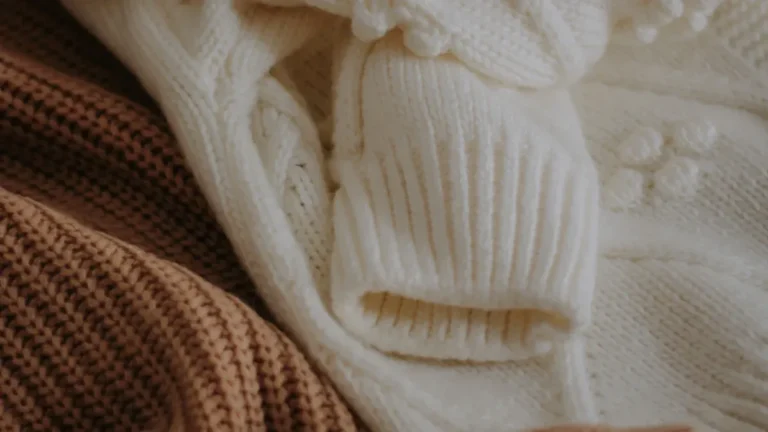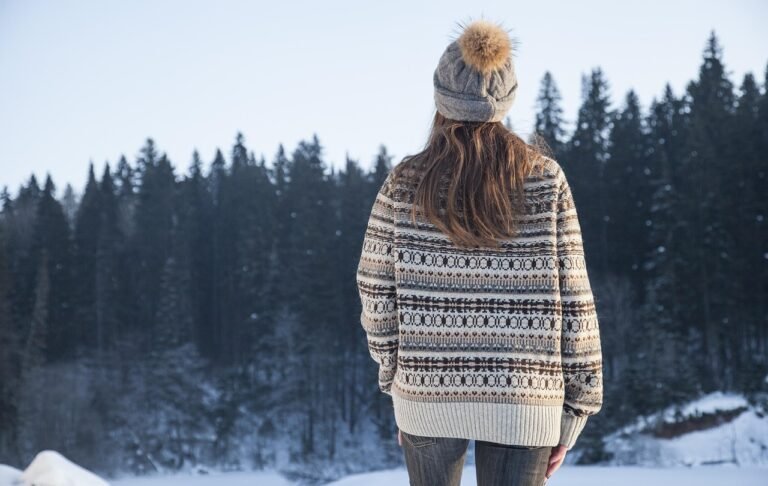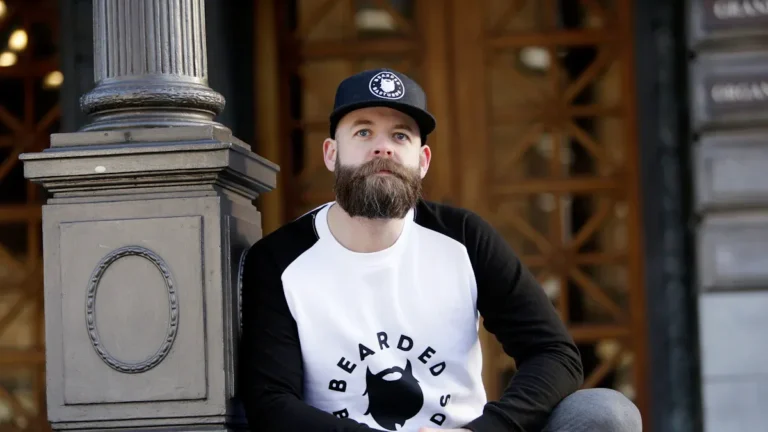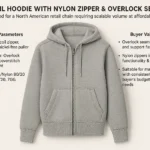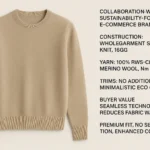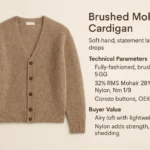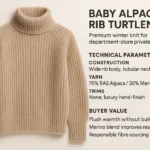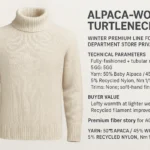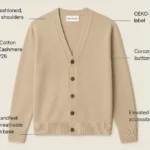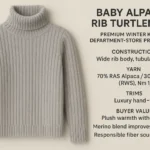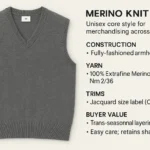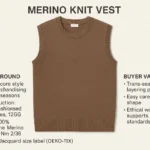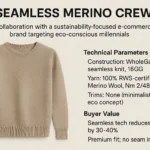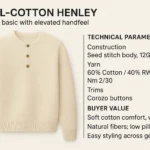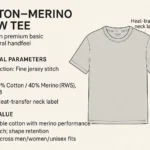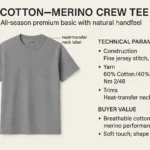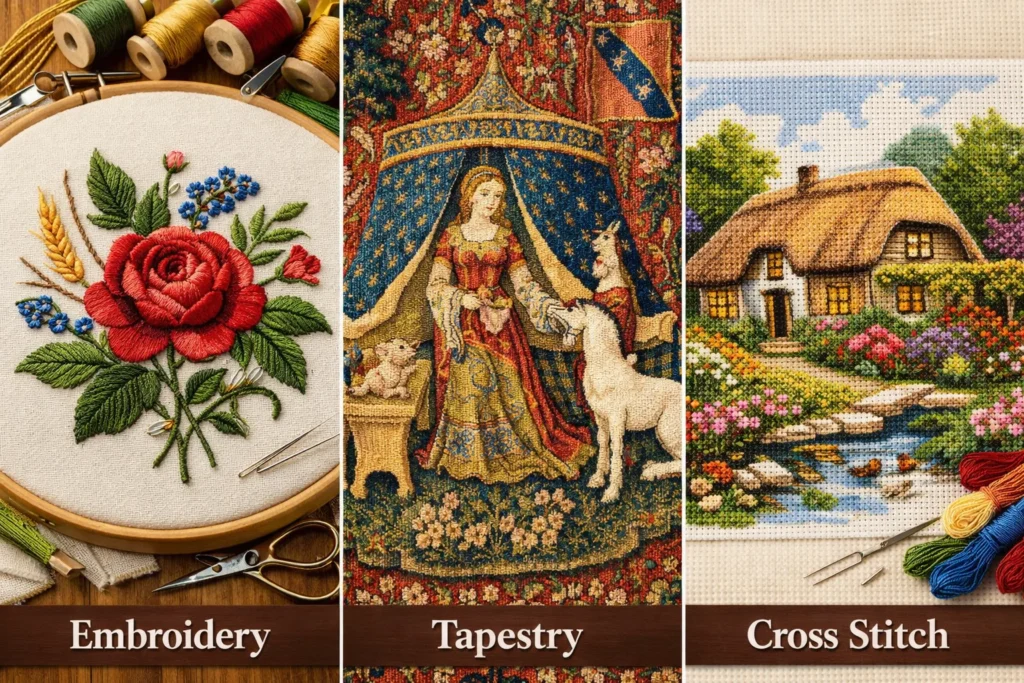
You may wonder how embroidery, tapestry, and cross stitch are different. Each needle art style uses its own stitches, fabrics, and ways to make art. Embroidery lets you try many stitches and textures. Cross stitch only uses X-shaped stitches on a grid. Tapestry often means weaving or needlepoint with bright patterns. If you enjoy needle arts, you will see embroidery uses more types of fabric and thread. Cross stitch usually uses Aida cloth. Tutorials for these needle art styles show how each one looks different. Needle arts are getting more popular all over the world. Surface embroidery is the most popular in craft comparisons.
|
Segment |
Market Share |
CAGR (2025-2034) |
|
|---|---|---|---|
|
Counted Embroidery |
30% |
USD 477.42 Million |
6.1% |
|
Surface Embroidery |
40% |
USD 636.56 Million |
6.3% |
|
United States (Counted) |
20% |
USD 95.49 Million |
6.3% |
|
Germany (Counted) |
15% |
USD 71.61 Million |
5.9% |
|
China (Counted) |
10% |
USD 47.74 Million |
6.0% |

Knowing these differences helps you choose the right needle art style. You can use this for your next project, for fun, or for work in needle arts.
Key Takeaways
-
Embroidery lets you use many stitches and fabrics. You can be creative with your designs.
-
Tapestry has strong patterns and feels thick. It is good for big wall art and furniture.
-
Cross stitch uses a simple grid and X-shaped stitches. It is easy for beginners and makes neat designs.
-
Picking the right fabric is very important. Each needle art style works best with certain materials. These materials make your project look better.
-
Knowing different stitch types helps you pick the best way to sew. You can choose detailed or bold designs.
-
Thread thickness changes how your work looks and feels. Thick threads make bold designs. Thin threads make soft, small details.
-
Think about what you want to make before you pick a style. Embroidery is good for clothes. Tapestry is good for wall art. Cross stitch is nice for gifts.
-
Start with easy projects to help you learn. Small kits teach you the basics and are not too hard.
Needle Art Styles Overview
Needle art gives you many ways to create with fabric and thread. You might see embroidery, tapestry, and cross stitch in craft stores or museums. Each style has its own look and method. Let’s break down what makes each one special.
Embroidery Basics
Embroidery is a broad term. It covers many types of embroidery, from simple stitches to complex designs. You use a needle and thread to decorate fabric. You can try freeform embroidery, where you draw with thread, or counted embroidery, where you follow a pattern. Some types of embroidery use beads, sequins, or even small mirrors. You can work on cotton, linen, silk, or even denim. People have practiced embroidery for centuries. Today, you see it on clothes, home décor, and art pieces. Embroidery lets you mix colors, textures, and stitches. You can make flowers, animals, or even words. This style gives you lots of freedom to express yourself.
Tapestry Basics
Tapestry stands out because of its bold patterns and sturdy feel. You might think of large wall hangings or old castle decorations. Tapestry can mean two things. First, it can be woven on a loom, where you build the picture as you weave. Second, it can mean needlepoint, where you cover a canvas with stitches. Both types of tapestry use thicker threads and strong fabrics. Needlepoint tapestry often covers the whole surface, making it great for pillows or upholstery. You use special tapestry needles with blunt tips. Tapestry designs often show scenes, patterns, or borders. This style lasts a long time and adds a rich look to any space.
Cross Stitch Basics
Cross stitch is one of the most popular types of embroidery. You make tiny X-shaped stitches on a grid. The fabric, called Aida cloth, has holes that help you keep your stitches even. Cross stitch follows a pattern, so you know where each color goes. This style is great for beginners because the grid makes it easy to count and plan. Cross stitch can create detailed pictures, words, or borders. People have used cross stitch for hundreds of years. It became popular in many cultures, from Egypt to Europe. Today, you can find cross stitch kits in stores and digital patterns online. You can make bookmarks, wall art, or gifts with this style.
Tip: Here’s a quick look at how these styles compare:
|
Technique |
Characteristics |
|---|---|
|
Embroidery |
Many stitches, works on many fabrics, adds texture and detail, very flexible. |
|
Tapestry |
Woven or stitched, covers whole surface, uses thick threads, strong and bold. |
|
Cross Stitch |
X-shaped stitches, grid-based, follows patterns, creates detailed images, easy to learn. |
Needle art styles have changed over time. Cross stitch, for example, started in ancient Egypt and spread across the world. In the Middle Ages, people used it to show wealth. The Industrial Revolution made it easier for everyone to try. Now, you can find patterns online and join global communities. Each style has a rich history and a place in modern craft and industry.
Core Differences
When you look at needle art, you can see some main differences. These differences change how your project looks, feels, and lasts. The three big things to think about are base fabric, stitch type, and thread weight.
Base Fabric
The fabric you pick is very important for needle art. Each style uses its own kind of fabric. Every fabric has special qualities that affect your work. Here’s a table to help you see which fabrics go with each technique and what makes them unique:
|
Fabric Type |
Common Uses |
Technical Properties |
|---|---|---|
|
Silk Dupion / Silk Velvet |
Gold work embroidery |
100% silk, can stretch, often supported with calico for stability. |
|
Calico |
Foundation for gold work |
Adds support to silk, keeps stitches even. |
|
Cotton / Linen |
Silk shading, thread painting |
Good quality, may stretch, best with calico backing. |
|
Muslin / High-count linens |
White work embroidery |
Stable, lets pulled work show clearly. |
|
Chiffons / Nets / Leather |
Applique embroidery |
Versatile, works for many techniques. |
|
High-count fabric (silk/cotton) |
Stumpwork embroidery |
Strong, supports wires and padding. |
|
Cotton / Linen Canvas |
Tapestry, needlepoint embroidery |
Stiff, has pre-made holes, comes in different counts. |
|
Good quality linen |
Surface embroidery |
Easy to unpick, used for samplers. |
|
Tulle / Chiffon / Organdie |
Tambour, Lunville embroidery |
Fine netting, good for chain stitch, beads, and sequins. |
|
Aida |
Cross stitch |
100% cotton or blend, soft, easy to clean, has a clear grid. |
|
Needlepoint Canvas |
Needlepoint |
Loosely woven, stiffened for durability. |
You should choose a fabric that fits your project. Good fabric can make your embroidery better. If your fabric is thin or see-through, add a lining like cotton muslin. This gives extra support and hides threads on the back. Lining also helps if you use thick threads or heavy stitching. In factories, picking the right fabric helps your needle art last longer and look nice, even after lots of use.
Tip: Always test your fabric before you start. Put it in a hoop or frame and pull it tight. Make sure it can handle your stitches.
Stitch Type
Stitch type is another big difference between embroidery, tapestry, and cross stitch. Each style uses its own stitches. These stitches change how your finished piece looks and feels.
|
Stitch Type |
Description |
Usage Context |
|---|---|---|
|
Cross-stitch |
X-shaped stitch over a grid pattern |
Cross stitch embroidery |
|
Tent stitch |
Diagonal stitch at 45°, basic for needlepoint |
Needlepoint embroidery |
|
Basketweave stitch |
Diagonal rows, adds strength and texture |
Needlepoint embroidery |
|
Half-cross tent stitch |
Vertical or horizontal tent stitch |
Needlepoint embroidery |
|
Continental stitch |
Sturdy tent stitch, vertical or horizontal |
Needlepoint embroidery |
|
Gobelin stitch |
Diagonal over one vertical, two horizontal threads |
Needlepoint embroidery |
|
Cushion stitch |
Five stitches on a diagonal, layered effect |
Needlepoint embroidery |
|
Parisian stitch |
Long vertical stitch, basketweave look |
Needlepoint embroidery |
|
Mosaic stitch |
Three stitches, one long with two short |
Needlepoint embroidery |
Embroidery lets you use lots of stitches. Some are easy, like running stitch or backstitch. Others, like satin stitch or French knots, add texture and take more time. Cross stitch only uses the X-shaped stitch. This makes it simple to follow patterns and count spaces. Tapestry, especially needlepoint, uses tent stitches and other types. These stitches cover the fabric and make it strong and bold.
Stitch type changes how long your project takes. Easy stitches are fast and good for beginners. Fancy stitches need more skill and time but give more detail. In factories, machines can copy many hand stitches. But some hard stitches still look best by hand.
Thread Weight
Thread weight changes how your needle art looks and feels. You can pick thick or thin threads. Each one gives a different effect.
In hand embroidery, size 8 perle cotton is popular. It shows detail but does not look too thick. If you want more texture, use size 5 perle cotton. For big, raised stitches, size 3 perle cotton is good. For tiny details, 12wt threads work best. They are as thin as one strand of embroidery floss and are great for fine fabric.
-
Thick threads make bold, textured stitches that stand out.
-
Thin threads let you make small, delicate details.
-
The thread you pick changes the whole look of your embroidery.
In tapestry, you usually use thick wool or cotton threads. These fill the canvas fast and make it strong. Cross stitch uses six-strand embroidery floss. You can use all six strands for bold lines or fewer for lighter designs.
If you use thick thread, you cover more space with fewer stitches. This gives you bright colors and strong texture. Thin threads take longer to fill space but let you make detailed designs. In factories, thread weight matters for speed and machine settings. Thick threads need bigger needles and more tension. Thin threads are good for small logos or tiny text.
Note: Try different thread weights on a scrap of your fabric. You will see how each one changes the look and feel of your embroidery.
If you know these main differences—base fabric, stitch type, and thread weight—you can pick the best style for your project. Whether you sew by hand or use a machine, these choices change your final result and help your needle art stand out.
Visual Effect
When you look at embroidery, tapestry, and cross stitch, you notice each style creates a unique visual impact. The way stitches sit on the fabric, the colors you choose, and the texture you build all play a role in how your finished piece looks.
Embroidery gives you lots of freedom. You can mix different stitches, blend colors, and add layers. Your design might look soft and flowing, or bold and raised. Satin stitch creates smooth, shiny areas. French knots add tiny bumps. You can make flowers look real or add sparkle with metallic threads. Embroidery often feels delicate and detailed. You see it on shirts, dresses, and art pieces.
Tapestry stands out with its solid coverage and strong patterns. You fill the whole surface with stitches or woven threads. The result looks thick and sturdy. Colors in tapestry often appear rich and deep. You might see big scenes, geometric shapes, or repeating borders. Tapestry works well for wall hangings, cushions, and upholstery. The texture feels heavy and the design lasts for years.
Cross stitch creates a pixelated effect. You use X-shaped stitches on a grid, so your design looks neat and organized. Each color sits in its own square. Cross stitch works great for pictures, words, and borders. The finished piece looks crisp and clear. You can make simple patterns or detailed images. Cross stitch often feels playful and bright.
Tip: If you want a soft, painterly look, try embroidery. For bold, graphic designs, tapestry is your best choice. If you like clear lines and easy patterns, cross stitch will make you happy.
Here’s a quick table to help you compare the visual effects:
|
Style |
Texture |
Color Impact |
Typical Look |
Best For |
|---|---|---|---|---|
|
Embroidery |
Raised, varied |
Blended, layered |
Soft, detailed |
Clothing, art, accents |
|
Tapestry |
Thick, solid |
Deep, bold |
Strong, graphic |
Wall art, upholstery |
|
Cross Stitch |
Flat, even |
Crisp, separated |
Pixelated, clear |
Pictures, samplers |
In industrial production, machines can mimic these effects. Digital embroidery can copy the raised look of hand stitches. Knitwear jacquard can reproduce tapestry patterns with yarn. Cross stitch designs translate well to digital formats because of their grid structure. You see these styles in fashion, home décor, and even branding.
You get to choose the visual effect that matches your project. Think about where you want to use your needle art. Do you want something soft and elegant? Or do you need a bold statement piece? The visual effect helps you set the mood and style for your work.
Embroidery Techniques

Freeform Embroidery
Freeform embroidery gives you lots of freedom. You can draw with your needle and thread. It feels like sketching on paper. You can try free motion machine embroidery. People also call it freestyle embroidery or thread painting. You move the fabric under the needle to make designs. Each design is unique. This works well for quilts and clothes. You do not need to follow a pattern. You can mix stitches and blend colors. You can add texture wherever you want. Surface embroidery often uses this style. You can make flowers, animals, or shapes. If you are new to embroidery, freeform is fun to try. It helps you be creative.
Counted Embroidery
Counted embroidery is neat and organized. You follow a grid and use patterns. This includes cross-stitch, blackwork, and whitework. Here is what makes counted embroidery special:
-
You use a grid and follow a pattern. This keeps your stitches even.
-
Cross-stitch uses X-shaped stitches. Your work looks like tiny squares.
-
Blackwork uses geometric patterns and backstitch. The designs look bold.
-
Whitework uses white thread on white fabric. It looks soft and lacy.
-
Other embroidery styles let you be creative. Counted embroidery keeps things tidy.
If you are new to embroidery, counted styles are helpful. You learn to count spaces and read charts. You can make samplers, borders, or pictures. Blackwork and whitework have a long history. They look nice in modern projects.
Tools and Materials
You need the right tools and materials to start embroidery. Here are the basics:
-
A pack of embroidery needles
-
Water soluble pen for marking designs
-
Pinking shears and embroidery scissors for cutting
-
Fabri-Tac fabric glue for finishing
-
Thread Heaven to keep threads smooth
-
Steam iron and ironing board for pressing
-
Light tablet or light box for tracing patterns
-
Printer or scanner for copying designs
-
Six stranded embroidery floss for most stitches
-
One yard of cotton or linen embroidery fabrics
You can also use metallic threads for special effects. These include passing thread, purls, bullion thread, Japan thread, rococo, torsade, or jaceron. Cotton or linen fabrics work best for embroidery. Padding like felt or string adds dimension. Couching uses thin thread to hold thick metal threads on top.
Tip: Always test your threads and stitches on scrap fabric first. This helps you see how the colors and textures will look.
With these tools and materials, you can try many stitches. You can explore blackwork, whitework, and other styles. Whether you pick freeform or counted embroidery, you have many ways to show your creativity.
Typical Uses
You may see embroidery in many places every day. It can be on your clothes or as art on your wall. People use embroidery in old crafts and new styles. Let’s see some ways people use embroidery.
1. Fashion and Apparel
Embroidery is very common in fashion. Designers put it on shirts, jackets, jeans, and shoes. Brands like Anthropologie and Vogue show off embroidered clothes. You might see flowers on denim or big logos on hats. Embroidery helps clothes look special and unique.
2. Home Decor
Embroidery makes your home feel warm and cozy. You can find it on pillows, curtains, and wall art. Many people make hoop art for bedrooms or living rooms. Tablecloths and napkins with embroidery look handmade and nice for meals.
3. DIY and Personal Projects
DIY embroidery kits are very popular now. You can buy a kit and start right away. These kits help you make gifts, bookmarks, or patches for bags. Many people learned embroidery at home during the pandemic to relax.
4. Sustainable and Upcycled Fashion
You can use embroidery to fix old clothes. Add a patch or design to cover a stain or hole. This helps save clothes and is good for the planet. You make something new and special from something old.
5. Craftivism and Social Change
Some people use embroidery to share messages about things they care about. This is called craftivism. You might see words or symbols that support a cause. Embroidery lets people speak up and connect with others.
6. Quilting and Modern Crafts
Modern quilters add embroidery to their quilts. This gives quilts more texture and makes each one different. The modern quilt movement mixes old and new ideas for cool designs.
Here’s a table that shows where embroidery is used:
|
Use Case |
Example Items |
Why It’s Popular |
|---|---|---|
|
Fashion |
Jackets, jeans, hats, shoes |
Trendy, personal, eye-catching |
|
Home Decor |
Pillows, wall art, table linens |
Cozy, handmade, stylish |
|
DIY Projects |
Kits, patches, gifts |
Relaxing, creative, accessible |
|
Sustainable Fashion |
Upcycled clothes, repairs |
Eco-friendly, unique |
|
Craftivism |
Banners, protest art |
Empowering, meaningful |
|
Quilting |
Modern quilts, art quilts |
Innovative, textured |
Tip: Try putting embroidery on something you already have. You could turn an old shirt into something you love!
Embroidery is part of many things in life. You can use it to show your style, decorate your home, or support a cause. Whether you sew by hand or use a machine, embroidery gives you many ways to create and share.
Tapestry Methods

Woven Tapestry
When you think of tapestry, you might picture big, colorful wall hangings in castles or museums. Woven tapestry is the classic way to make these. You use a loom to weave threads together. The special thing about woven tapestry is that you only see the weft yarn on the surface. The warp threads hide underneath because you pack the weft down tightly. This method lets you blend colors and create shapes that look like paintings.
Here’s a quick look at what makes woven tapestry unique:
|
Feature |
Description |
|---|---|
|
Only the weft yarn shows on the surface. The warp hides under the packed weft. |
|
|
Discontinuous Weft |
You can use different weft bundles for each color or shape. This helps you make detailed designs. |
You can use this method to make bold patterns or soft, blended pictures. Woven tapestry gives you lots of freedom to play with color and texture.
Needlepoint Tapestry
Needlepoint tapestry is another popular way to make tapestry art. You use a stiff, open-weave canvas as your base. Then, you fill the canvas with dense, interlocking stitches. This creates a solid, sturdy look. Needlepoint tapestry feels different from woven tapestry. The stitches sit on top of the canvas, so you get a raised, textured surface.
Here’s how needlepoint tapestry stands out:
-
You use a needle and thread to make stitches on canvas.
-
The stitches cover the whole canvas, making the design strong and bold.
-
Needlepoint tapestry works well for pillows, seat covers, and wall art.
-
The finished piece looks solid and lasts a long time.
Woven tapestry uses a loom and weaving, so the fabric feels more flexible. Needlepoint tapestry uses stitches, so the surface feels thicker and more structured. You can choose needlepoint tapestry if you want a project that is easy to start and gives you a strong, finished piece.
Materials and Equipment
You need the right tools to make tapestry. For woven tapestry, you use a loom. There are simple frame looms, low-warped looms, and high-warped looms. Some looms are small and easy to carry. Others are big and stay in one place. You also use bones and bobbins to organize your weft bundles. A tapestry fork or beater helps you pack the weft down tight.
For needlepoint tapestry, you need a tapestry frame or a rectangular scroll frame. You use canvas as your base. There are single thread and double thread canvases. You also need a tapestry needle. This needle has a blunt tip, so it does not split the threads of the canvas.
Here’s a list of what you might use:
-
Tapestry looms (frame, low-warped, high-warped)
-
Bones and bobbins
-
Tapestry fork or beater
-
Strong warp yarn and firm weft yarn
-
Non-tensioned looms (like Handywoman Shop looms)
-
Tensioned looms (like Mirrix Saffron Pocket Loom)
-
Large looms (like Mirrix Lani)
-
Portable looms for travel
-
Tapestry frame (rectangular scroll frame)
-
Canvas (single or double thread)
-
Tapestry needle
Tip: If you are just starting, try a simple loom or a small needlepoint tapestry kit. These are easy to use and help you learn the basics.
You can find tapestry supplies in craft stores or online. Pick the tools that fit your project and your space. With the right materials, you can make beautiful tapestry art at home.
Applications
You might ask where tapestries are used today. Tapestries have been around for a long time. You still see them in many places now. They add color and texture to rooms. Tapestries can make a space feel special. You can use tapestry at home, in a business, or at events.
Let’s see some main ways people use tapestry:
|
Application Type |
Description |
|---|---|
|
Home Decor |
Tapestries are used to enhance living spaces, adding warmth and personality through various designs and styles. |
|
Commercial Spaces |
Tapestries are incorporated in hotels, restaurants, and offices for ambiance and branding, offering flexible design options. |
|
Museums and Galleries |
Tapestries are valued for their artistic significance and are used in exhibitions and educational programs. |
|
Religious and Ceremonial |
Tapestries adorn places of worship and are valued for their symbolic meanings and intricate designs. |
|
Others |
Includes niche applications like event decoration and theatrical backdrops, showcasing the adaptability of tapestries. |
Home Decor
You can hang a tapestry on your wall to make it cozy. Some people use tapestries as bed covers or tablecloths. You can even use them as curtains. There are many designs to pick from. You might like bright patterns or soft pictures. Tapestries help you show your style at home.
Commercial Spaces
Businesses use tapestries because they are easy to change. Hotels hang them to make guests feel welcome. Restaurants use them to look fancy. Offices put up tapestries with their logo or colors. You can switch out tapestries for each season or event.
Museums and Galleries
Museums show tapestries as art. You can see old stories or learn about weaving. Galleries use tapestries to teach about design and culture. Looking at a tapestry can help you learn new things.
Religious and Ceremonial
Tapestries are often found in churches and temples. They show symbols or tell stories. You might see a tapestry during a special event. These pieces make ceremonies feel important and beautiful.
Other Uses
People use tapestries for parties or weddings. Plays use big tapestries as backgrounds. Some people use small tapestries as flags or banners. There are many ways to use tapestry.
Tip: Want to change a room fast? Hang up a tapestry. It can make your space feel new right away!
Tapestries fit in lots of places. You can use them for art, for decorating, or for showing off a brand. No matter what you pick, tapestry adds warmth and creativity to your space.
Cross Stitch Embroidery
Cross Stitch Structure
You might wonder what makes cross stitch different from other embroidery styles. The secret is in the structure. Cross stitch uses a counted-thread method. You make X shapes on fabric, usually Aida cloth or evenweave. Each cross sits neatly in a square, so your design looks organized and clear. You count the threads and follow a grid, which helps you keep your stitches even. This structure makes cross stitch easy to learn and perfect for beginners.
Let’s compare cross stitch and embroidery in a simple table:
|
Aspect |
Cross Stitch |
Embroidery |
|---|---|---|
|
Technique and Execution |
Relies on counted-thread method, forming X shapes |
Diverse techniques, can be freehand or patterned |
|
Fabric Used |
Typically uses Aida cloth or evenweave fabric |
Suitable fabrics include cotton, silk, or linen |
|
Purpose and Aesthetic |
Commonly used for framed artwork and samplers |
Often used for decorative purposes on clothing |
|
Tools and Materials |
Primarily involves needles, embroidery floss, and gridded fabric |
Requires needles, threads, hoops, and embellishments |
Cross stitch embroidery stands out because you always know where each stitch goes. You get crisp lines and a pixelated look. You can use cross stitch for samplers, wall art, or gifts. The structure helps you avoid mistakes and makes your finished piece look professional.
Patterns and Charts
You need a good pattern to start your cross stitch project. Patterns show you where to place each cross. Most patterns use a grid, and each square matches a stitch. You can draw your own pattern on graph paper or use online tools. Many people use Stitch Fiddle or Stitchly to create cross stitch designs. These tools let you pick thread colors, upload images, and turn them into charts.
When you follow a pattern, you count the squares and match the colors. This keeps your cross stitch design neat. Some patterns are simple, with just a few colors. Others are complex, with hundreds of tiny crosses. You can make your own pattern by drawing inspiration from photos or art. Many designers stitch their own patterns, adding a personal touch to each piece.
If you want to try cross stitch embroidery, start with a small pattern. You will learn how to count, follow charts, and see your design come to life.
Materials and Tools
You need the right materials and tools for cross stitch embroidery. Here’s a list to help you get started:
-
Pattern
-
Fabric
-
Thread
-
Needle
-
Embroidery Hoops
-
Embroidery floss bobbin box
Embroidery hoops hold your fabric tension so that your stitches are even. Hoops come in a variety of sizes and shapes to accommodate your cross stitch project.
Aida cloth is the most popular fabric for cross stitch. You can also use evenweave for a finer look. Embroidery floss comes in many colors, so you can match your pattern. Needles for cross stitch have blunt tips, which help you avoid splitting the threads. You can organize your floss in a bobbin box to keep colors tidy.
With these tools, you can start any cross stitch project. You will find that cross stitch embroidery is relaxing and rewarding. You can make bookmarks, wall art, or gifts. The structure, patterns, and materials all work together to help you create beautiful cross stitch designs.
Project Ideas
You might wonder what you can make with cross stitch. The truth is, you can create almost anything. Cross stitch gives you endless ways to show your style and make something special. You can start with simple patterns or try bigger projects as you learn more. Many people love cross stitch because it feels relaxing and lets you see your progress with every stitch.
Let’s look at some of the most popular cross stitch project ideas. These ideas work for all ages and skill levels. You can find something fun whether you are just starting or have stitched for years.
|
Project Idea |
Skill Level |
Age Group |
|---|---|---|
|
Beautiful Cross-Stitched Family Portrait |
Beginner |
All ages |
|
DIY Easy Giant Embroidery Picnic Blanket |
Beginner |
All ages |
|
Cute Kitty Cross Stitch Pattern |
Beginner |
Children |
|
Easy-Peasy Frame Work Cross Stitch |
Beginner |
All ages |
|
Jingle Bell Cross Stitch Pattern |
Beginner |
All ages |
|
Easy Mountain Themed Cross Stitching Pattern |
Beginner |
Outdoor enthusiasts |
|
Easy Cross Stitch Pattern In the Love Birds Theme |
Beginner |
All ages |
You can see that cross stitch projects come in many forms. You might want to make a family portrait. This project lets you stitch each family member and create a keepsake. If you like spending time outside, you can try a giant embroidery picnic blanket. This project uses cross stitch to add color and fun to your outdoor space.
Children often enjoy cute patterns. A kitty cross stitch pattern is perfect for young stitchers. You can finish it quickly and feel proud of your work. If you want something simple, try an easy-peasy frame work cross stitch. You can finish this project in one afternoon and hang it on your wall.
Holidays bring even more cross stitch ideas. A jingle bell cross stitch pattern adds a festive touch to your home. You can use bright colors and shiny threads to make it stand out. Outdoor lovers might enjoy a mountain-themed cross stitch pattern. This project lets you stitch nature scenes and remember your favorite hikes.
Love birds are a classic cross stitch theme. You can make a sweet gift for someone special. This pattern works well for weddings, anniversaries, or just to show you care.
Tip: Start with a small cross stitch project if you are new. You will finish faster and feel more confident to try bigger designs.
You can also use cross stitch to make bookmarks, greeting cards, or patches for your backpack. Many people like to stitch quotes or names. You can personalize gifts and make them one-of-a-kind. Cross stitch lets you decorate your home, give thoughtful presents, or just relax after a busy day.
If you want to try something new, join a cross stitch club or online group. You can share your projects, get advice, and find new patterns. Cross stitch brings people together and helps you learn from others.
No matter what you choose, cross stitch gives you a creative outlet. You can pick your colors, change patterns, and make each project your own. Every cross stitch piece tells a story. You get to decide what story you want to share.
Industrial Applications
Mimicking Styles in Knitwear Jacquard
Factories use machines to make needle art styles. Knitwear jacquard is one way to do this. Special knitting machines make patterns that look like hand stitching. You can find these patterns on sweaters, scarves, and socks.
Jacquard knitting copies cross stitch by using colored yarns in a grid. The machine puts each color in the right place, just like you would with a needle. For tapestry, the machine knits bold shapes and strong lines. This makes thick, textured designs that look like old wall hangings. Embroidery styles can show up in knitwear too. The machine can make raised lines or small details that look like satin stitch or chain stitch.
Tip: If you want your brand to stand out, jacquard knitwear lets you add logos, borders, or even full pictures to your clothes.
Digital Embroidery Production
Digital embroidery has changed how factories use needle art. Today’s machines use computers to stitch designs very accurately. You can make detailed patterns that look like hand embroidery, cross stitch, or tapestry.
Here’s why digital embroidery is so useful:
-
Digital machines copy designs exactly. Every piece looks the same.
-
New software helps you make hard designs. You can add smooth color changes and real textures.
-
Computerized machines do tricky stitches for you. You can focus on your ideas.
-
Some machines use many needles and have big design libraries. You can pick from lots of styles.
-
Designers use these machines for detailed patterns. The quality and creativity are better.
-
Automation means the machine does the hard work. You can make complex patterns quickly.
-
Better digitizing gives you more detail and better stitches.
-
Digital embroidery mixes old styles with new technology. You get classic looks with modern speed.
You can use digital embroidery for uniforms, sportswear, home décor, and more. The results look sharp and last a long time.
B2B Considerations
If you work in fashion, home goods, or branding, you need to think about how needle art fits your business. Here are some things to remember:
|
Factor |
Why It Matters for B2B |
|---|---|
|
Consistency |
Machines make every piece look the same. |
|
Speed |
Automation means faster production. |
|
Customization |
You can offer unique designs for each client. |
|
Cost |
Digital methods lower labor costs. |
|
Scalability |
Easy to make small or large batches. |
|
Quality Control |
Software checks for errors before stitching. |
You can work with factories to turn your art into digital files. Machines then stitch your designs onto fabric, knitwear, or leather. If you want to stand out, you can mix styles. For example, add a cross stitch border to a jacquard sweater or use a tapestry pattern on a pillow.
Note: When you pick a factory, ask about their machines and software. The right tools help you get the look you want every time.
Industrial applications let you bring needle art into today’s world. You get the beauty of old styles with the power of new technology.
Choosing a Needle Art Style
Project Type
You probably have a project in mind. Maybe you want to decorate a pillow, make a wall hanging, or add a personal touch to your clothes. The type of project you choose will help you pick the right needle art style.
-
If you want to add small details to clothing or accessories, embroidery works best. You can stitch flowers on a shirt or add a name to a tote bag.
-
For big, bold wall art or something that covers a large area, tapestry stands out. Tapestry gives you strong patterns and a sturdy finish.
-
Cross stitch is perfect for pictures, samplers, or gifts. You can follow a pattern and create a design that looks neat and organized.
Here’s a quick table to help you match your project with the best style:
|
Project Goal |
Best Needle Art Style |
Why It Works Well |
|---|---|---|
|
Clothing decoration |
Embroidery |
Flexible, works on many fabrics |
|
Wall hangings |
Tapestry |
Bold, covers large areas |
|
Personalized gifts |
Cross Stitch |
Easy to follow patterns |
|
Home décor accents |
Embroidery |
Adds detail and texture |
|
Upholstery or pillows |
Tapestry |
Durable, strong visual impact |
Think about what you want your finished piece to look like. Do you want something soft and detailed? Embroidery gives you that. Do you want a strong, graphic look? Tapestry is your answer. If you want a clear, pixel-like design, cross stitch will make you happy.
Time Commitment
You might wonder how much time you need for each style. Some projects take just a few hours. Others can last for months. Your schedule and patience will help you decide.
-
Embroidery projects can be quick or long, depending on the design. Small patches or simple flowers might take an afternoon. Large, detailed pieces can take weeks.
-
Tapestry usually takes more time. Covering a big canvas or weaving a wall hanging is a big job. You might spend several weeks or even months on one piece.
-
Cross stitch projects can also take a long time, especially if you pick a large pattern. Some cross stitch designs take up to a year to finish if you work a little at a time.
You do not need to finish everything in one sitting. Many people use short sessions, like 15 to 30 minutes, to make progress. Setting a timer can help you stay focused. Stitching a little bit each day adds up fast.
Here’s a table to show how long some projects might take:
|
Project Type |
Size (in stitches or inches) |
Estimated Time (in months) |
|---|---|---|
|
Embroidery |
Small (patch, 2-4 inches) |
Less than 1 |
|
Embroidery |
Large (shirt, art piece) |
1-3 |
|
Tapestry |
Medium (wall hanging) |
2-6 |
|
Cross Stitch |
Large (full sampler) |
If you want a quick win, start with a small embroidery or cross stitch project. If you enjoy slow, steady progress, tapestry or a big cross stitch piece might be just right.
Tip: Try stitching during short breaks or while watching TV. You will be surprised how much you can finish over time!
Beginner Friendliness
If you are new to needle arts, you want something beginner-friendly. Some styles are easier to start with than others.
-
Embroidery is very beginner-friendly. You can start with simple stitches and small designs. Many kits come with everything you need and easy instructions.
-
Cross stitch is also beginner-friendly. The grid fabric and X-shaped stitches make it easy to follow patterns. You do not need to worry about making mistakes because you can count and check your work.
-
Tapestry can be a bit harder for beginners. Woven tapestry needs a loom and some practice. Needlepoint tapestry is easier, but it still takes time to learn the stitches and cover the canvas.
Here are some reasons why embroidery and cross stitch are great for beginners:
-
You can find lots of beginner-friendly kits in stores and online.
-
Both styles use simple tools and materials.
-
You can finish small projects quickly, which helps you stay motivated.
-
There are many tutorials and videos to help you learn.
If you want to try tapestry, look for a beginner-friendly needlepoint kit. These kits have simple patterns and all the supplies you need.
Note: Pick a project that feels fun and not too hard. The best way to learn is to start stitching and enjoy the process!
Budget and Materials
When you start a new needle art project, your budget and the materials you pick can make a big difference. Some styles need more tools or special supplies. Others let you begin with just a few basics. Let’s break down what you might spend and what you’ll need for embroidery, tapestry, and cross stitch.
How Much Will You Spend?
You might wonder how much money you need to get started. Here’s a quick look at the typical costs for beginners:
|
Craft |
Initial Investment Range |
|---|---|
|
Cross Stitch |
|
|
Embroidery |
$40–62 |
These numbers cover the basics—fabric, needles, thread, and a hoop or frame. If you want to try tapestry, the cost can go up, especially if you buy a loom or large canvas. Needlepoint tapestry kits often cost more because they include a pre-printed canvas and thicker threads.
What Materials Do You Need?
Let’s look at what you’ll need for each style:
-
Embroidery: You need embroidery floss, a hoop, needles, and fabric like cotton or linen. You can add extras like metallic threads, beads, or specialty needles if you want to get fancy.
-
Cross Stitch: You need Aida cloth, embroidery floss, a blunt needle, and a hoop. Patterns are easy to find online or in kits. Most kits include everything you need.
-
Tapestry: For needlepoint tapestry, you need a stiff canvas, tapestry wool or thick thread, and a blunt tapestry needle. If you want to weave, you’ll need a loom, warp yarn, and weft yarn. Tapestry supplies can cost more, especially for larger projects.
Tip: If you’re on a tight budget, start with a small embroidery or cross stitch kit. These kits include all the basics and help you learn without spending a lot.
How Do Materials Affect Your Project?
The materials you choose change how your finished piece looks and feels. High-quality threads give you brighter colors and smoother stitches. Cheaper fabric might stretch or tear, so it’s smart to pick the best you can afford. If you want your project to last, invest in good needles and sturdy fabric.
You can also save money by using what you have at home. Old shirts, pillowcases, or leftover yarn can become the base for your next project. Many crafters love upcycling because it’s creative and eco-friendly.
What About Upgrades?
As you get more experience, you might want to try new tools. Light boxes, specialty scissors, or fancy thread organizers can make stitching easier and more fun. These extras aren’t required, but they can help you enjoy your hobby even more.
Note: You don’t need to buy everything at once. Start simple. Add new tools and materials as you learn what you like.
Choosing What’s Right for You
Think about your budget and what you want to make. If you want to try needle art without spending much, cross stitch and embroidery are great choices. If you’re ready for a bigger investment and want to make bold wall art, tapestry might be worth it.
No matter which style you pick, you can find options for every budget. Start with the basics, enjoy the process, and upgrade as you go. Your creativity matters more than the price tag!
You’ve seen how embroidery, tapestry, and cross stitch each bring something special to needle art. Embroidery gives you freedom with stitches and textures. Tapestry stands out with bold patterns and sturdy designs. Cross stitch keeps things neat and easy to follow. Want to try a new project or explore industrial techniques? Pick the style that fits your goals.
Ready to learn more? Check out online tutorials, join a local craft group, or browse pattern libraries for inspiration!
FAQ
What is the main difference between embroidery, tapestry, and cross stitch?
Embroidery uses many stitches and fabrics. Tapestry covers the whole surface with thick threads. Cross stitch uses X-shaped stitches on a grid. Each style gives you a different look and feel.
Can I use the same needle for all three styles?
You should not. Embroidery needles have sharp points. Tapestry needles have blunt tips for canvas. Cross stitch needles are also blunt. Using the right needle makes stitching easier and protects your fabric.
Which style is best for beginners?
Cross stitch is the easiest to start. The grid fabric and simple X-shaped stitches help you follow patterns. Embroidery is also beginner-friendly if you start with basic stitches. Tapestry takes more time to learn.
What fabric should I use for cross stitch?
You should use Aida cloth. It has a clear grid that helps you place each stitch. Evenweave fabric also works for more detailed designs. Both fabrics make counting and stitching easy.
How do I care for finished needle art?
Gently hand wash your piece in cold water. Lay it flat to dry. Iron on the back with a cloth on top. Avoid bleach and harsh cleaners. Proper care keeps your work looking bright and new.
Can I mix styles in one project?
Yes! You can combine embroidery, cross stitch, and tapestry for unique effects. Try adding embroidered flowers to a cross stitch sampler or use tapestry borders on an embroidery piece. Mixing styles lets you get creative.
Is machine embroidery as good as hand embroidery?
Machine embroidery gives you fast, consistent results. Hand embroidery feels more personal and unique. Both look beautiful. You can choose the method that fits your project and style.






